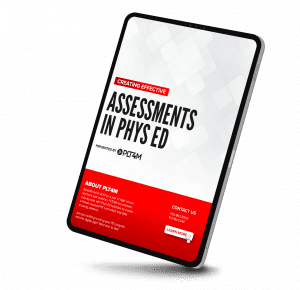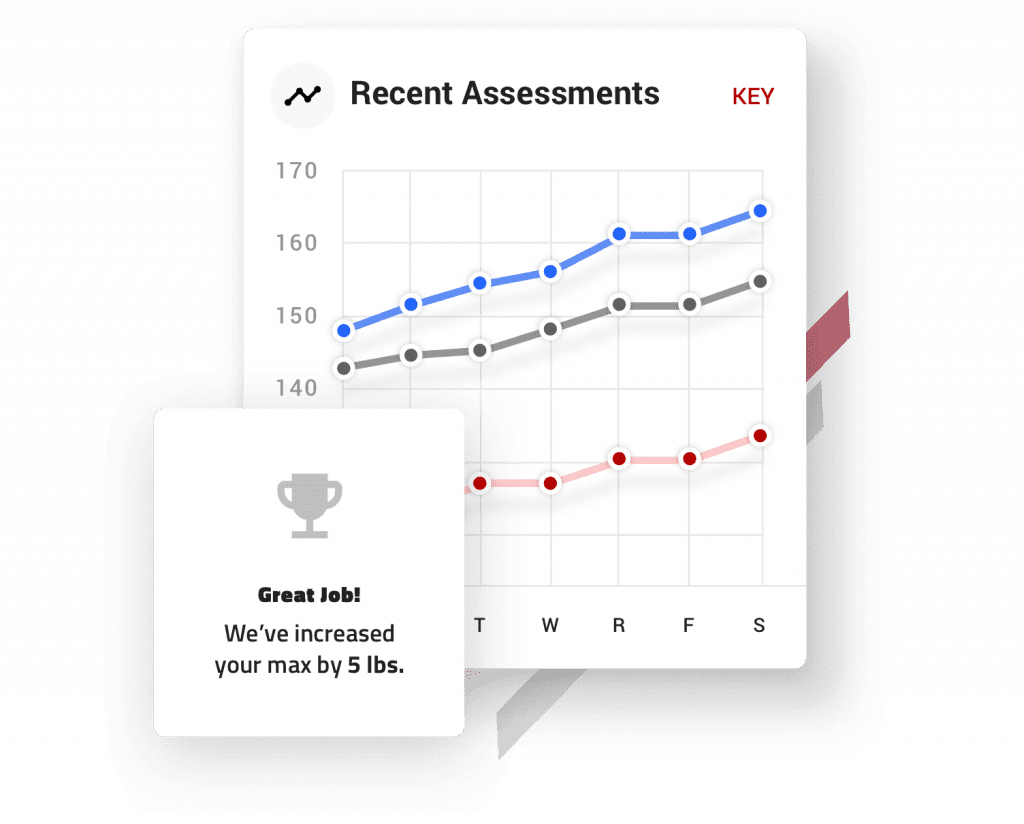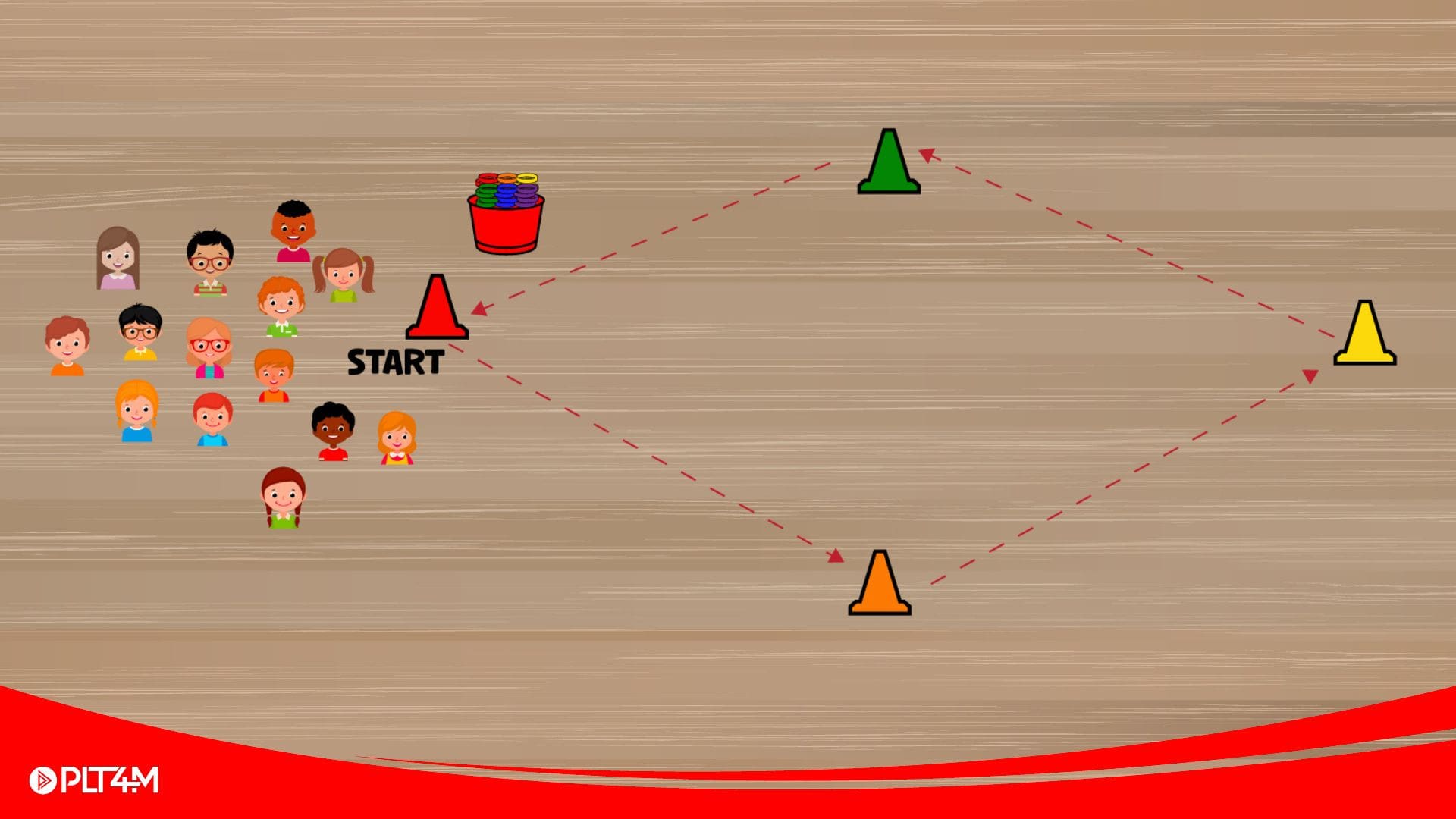At times over the years, assessments and tests have mistakenly become interchangeable words in the world of education. In this article, we set out to better define assessments in physical education and how they can be utilized to empower student learning and provide better teacher insights. Let’s first start with making sure we set the record straight on our terminology.
Assessment in PE
It is important to note that assessment does not equal testing. Testing implies pass/fail, and this, for our purposes, is useless when it comes to fitness, performance, and physical education. While even here at PLT4M, we still sometimes use the phrase fitness testing, we really mean the idea of formative assessments that allow us to check in on progress and learning.
Assessment in physical education better implies measurement and comparison. Assessment allows us to track qualities like performance abilities, fatigue levels and readiness, general health markers, and understanding of key concepts.
Shape America defines assessment as, “one of the four essential components of physical education — is the gathering of evidence about student achievement and making inferences about student progress based on that evidence.”
Knowing your WHY with PE assessment
Once you have differentiated between testing and assessment, it is time to decide what your point of assessment will be. Basically, why bother? What will the data or information you are collecting via your phys ed assessment be used for?
You (The Physical Education Teacher) – Physical education teachers can utilize assessment as a means of evaluation and validation. Are the lessons and materials in class you are using helping students to learn the concepts? Are workouts or physical activities promoting personal improvement? If your evaluation via assessment says no, you can change and alter your approach. If the assessment helps to communicate yes, you are validating your work and can continue in that direction.
Them (The students) – For many students in physical education, a phys ed assessment can be a reinforcement of hard work through positive results. Students can see progress over time with simple check-ins or fun assessments. It can also help students identify personal strengths and weaknesses, which can help them set goals or strategies for better results.
Someone Else (Administrators, Parents, Etc) – While we wish physical education assessment didn’t have to be a means to justifying the subject, assessment can be a helpful way to showcase the ‘proof’ of what is going on in class. Often teachers can take assessment data and information and highlight key takeaways to showcase what is going on in physical education and its impact on students.
Formative Assessment For Physical Education
The Eberly Center at Carnegie Mellon has a simple way of defining formative assessments:
The goal of formative assessment is to monitor student learning to provide ongoing feedback that can be used by instructors to improve their teaching and by students to improve their learning. More specifically, formative assessments:
- help students identify their strengths and weaknesses and target areas that need work
- help faculty recognize where students are struggling and address problems immediately
In physical education, this can take the shape of many different types of assessments. Examples of formative assessments in physical education can include, but are not limited to,
- Beginning of class open-ended question
- Multiple choice survey
- Physical activity questionnaires
- Exit tickets
- Fitness/Skill Check In

Free Download!
Creating Effective Assessments in PE
Looking to create more effective assessments in your PE program? Download our free e-book for strategies on creating effective assessments in PE
Weightlifting Example of Formative Assessment For Physical
At PLT4M, one of our favorite times to use formative assessment in physical education is while doing weightlifting or strength training.
Historically, a summative assessment of a ‘max out’ has been the preferred choice for physical education teachers and coaches. The assessment tasks students to perform a single rep of the heaviest weight possible.
While some students enjoy this ‘max-out’ assessment, it does have its drawbacks. Students could have an ‘off-day’ when it is time to assess, which can lead to an inaccurate reflection of progress. Often PE teachers will conduct this assessment at the beginning and end of the semester, leaving weeks in between where measuring change or progress is not possible.
Worksets As A Formative Assessment In Physical Education
An alternative to maxing out is what we like to call a workset. Worksets are a tool found in our weight-based programs, used to assess students’ maxes and automatically adjust them up or down in increments of 5 lbs, based on their performance.
Based on the result of a given workset, and the rules set in place by PLT4M (or you if you built your own program), the max will auto-update and show kids a corresponding message:
- Great Job: We’ve Increased your max 5 LBs
- Almost: We’re going to keep your max where it is at for another week
- Don’t Sweat it! We are going to take one step back to take two forward. Your max has been adjusted down 5 LBs, but don’t worry, you’ll have plenty of chances to go back up in future weeks.
The benefit to this assessment style is that students can get feedback on a much more regular basis and start to see smaller improvements over time that can keep them engaged and motivated through a semester. Molly Collins, a PE teacher in Michigan, described the advantage of the workset for her physical education students,
“Worksets have made weightlifting more enjoyable for all my students in class. Instead of only the strongest kids feeling like they are improving, everyone can see the weekly feedback and know they are making progress. This is huge for an activity like weightlifting, which can be intimidating!”

Other Formative Assessment Physical Education Examples
Outside of just weightlifting, PE teachers can utilize a wide variety of fitness-based formative assessment strategies in class. Many PE teachers, because of the district or state requirements, will incorporate assessments like a 1-mile run, 1-minute squat, pacer, and 1-minute push-up test.
The important thing to remember with all of these examples is that students should only be compared to themselves. In the past, a norm assessment has been used to compare and contrast student performance with their peers. The problem with this assessment style is that it can leave students feeling like failures. Let’s use a hypothetical physical activity assessment with a student named Sarah as an example of this.
For example: Sarah ran the mile in 14:00. In a norm assessment she would be told she is in a certain percentile among her peers. Let’s say she was in the 20th percentile. When Sarah improved her mile time to 12:30, while she had a 1:30-minute personal improvement, she may only have moved up to the 25th percentile in her age group. Now Sarah feels as if her progress is not meaningful. This can have unintended consequences and people like Sarah overtime will learn to have a negative association to fitness.
But if we take a formative assessment approach with this mile example, her progress can be celebrated instead of making Sarah feel dejected. We can take that one-minute improvement and highlight that she made significant individual progress. A 10% improvement to be exact! This reframing of assessment and result can now better engage Sarah to continue working towards improvement, rather than disengagement and frustration.
Ready to WOW your Admins?
Schedule a 15-Minute demo to learn how PE teachers are ushering in a new age of Physical Education with Fitness and Technology!

Technology’s Role in PE Assessments
With all of the formative assessment physical education examples, it is important to note that technology in PE can help for a more streamlined assessment process. Collecting data on a regular basis can be a daunting task, but technology can allow for a more efficient and effective way to conduct assessment in PE.
Better yet, the use of technology can help you to achieve a better line of communication and processing of data for all stakeholders. Students can see progress and feedback mapped out over time. Teachers can better evaluate data at both an individual and class level. Administrators can see the top-line information.
Key Takeaways on Assessments in Physical Education
When it comes to assessments in physical education, we should take the hypothetical example of Sarah from earlier and consider the larger theme of engagement and motivation. Yes, we want to know if what we are doing within our physical education curriculum is working, but not at the cost of leaving students embarrassed or frustrated.
PE assessments can still give insights needed for teachers while still giving students the confidence that PE and physical activity is a positive in their lives. While you may still need to have a summative assessment for grading, it should not be tied around students’ ability to perform certain activities. Instead, it should consider the larger understanding of key concepts tied to whatever topic you cover.
This concept is not new to physical educators. Over the years, PE teachers have taken great steps to find ways that assessment is a low-stakes check-in that can improve their teachers and engender better student learning. Let’s continue to have open and honest conversations about what assessments in physical education can and should look like!
Have other ideas? Share them in the comments section!









